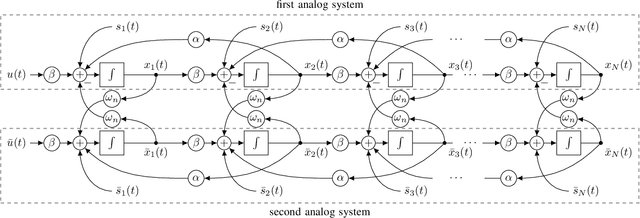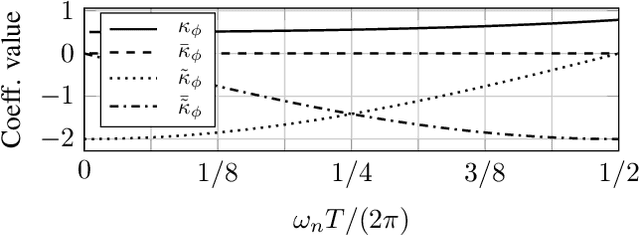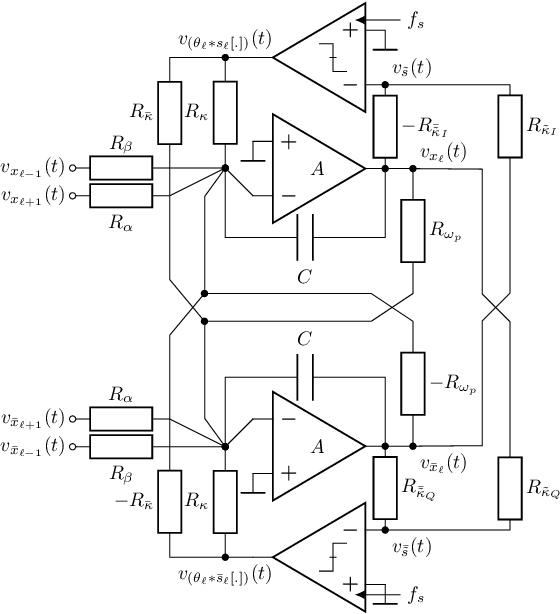Fredrik Feyling
The Continuous-Time RC-Chain ADC
Oct 22, 2024Abstract:An amplifier-less continuous-time analog-to-digital converter consisting of only passives, comparators, and inverters is presented. Beyond simplicity, the architecture displays significant robustness properties with respect to component variations and comparator input offsets. We give an analytical design procedure demonstrating how to parameterize the architecture to a range of signal-to-noise and bandwidth requirements and validate the procedure's accuracy with behavioral transient simulations.
A Control-Bounded Quadrature Leapfrog ADC
Oct 27, 2023Abstract:In this paper, the design flexibility of the control-bounded analog-to-digital converter principle is demonstrated. A band-pass analog-to-digital converter is considered as an application and case study. We show how a low-pass control-bounded analog-to-digital converter can be translated into a band-pass version where the guaranteed stability, converter bandwidth, and signal-to-noise ratio are preserved while the center frequency for conversion can be positioned freely. The proposed converter is validated with behavioral simulations on several filter orders, center frequencies, and oversampling ratios. Additionally, we consider an op-amp circuit realization where the effects of first-order op-amp non-idealities are shown. Finally, robustness against component variations is demonstrated by Monte Carlo simulations.
Quadrature Control-Bounded ADCs
Nov 12, 2022



Abstract:In this paper, the design flexibility of the control-bounded analog-to-digital converter principle is demonstrated by considering band-pass analog-to-digital conversion. We show how a low-pass control-bounded analog-to-digital converter can be translated into a band-pass version where the guaranteed stability, converter bandwidth, and signal-to-noise ratio are preserved while the center frequency for conversion can be positioned freely. The proposed converter is validated with behavioral simulations for a variety of filter orders, notch-filter frequencies, and oversampling ratios. Finally, robustness against component variations is demonstrated by Monte Carlo simulations.
Calibrating Control-Bounded ADCs
Nov 12, 2022Abstract:The paper considers the calibration of control-bounded analog-to-digital converters. It is demonstrated that variations of the analog frontend can be addressed by calibrating the digital estimation filter. In simulations (both behavioral and transistor level) of a leapfrog analog frontend, the proposed calibration method restores essentially the nominal performance. Moreover, with digital-filter calibration in mind, the paper reformulates the design problem of control-bounded converters and thereby clarifies the role of sampling, desired filter shape, and nominal conversion error.
 Add to Chrome
Add to Chrome Add to Firefox
Add to Firefox Add to Edge
Add to Edge